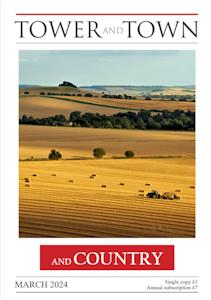

Tower and Town, March 2024 (view the full edition) (view the full edition)Savernake ForestThe Forest is often mistaken for a 'natural' or 'wild' place. In fact, the forest we know and love is the product of centuries of human intervention. This management has created Savernake's mosaic of veteran trees, wood pasture, grassland, and pond habitat, which is bursting with scarce flora and fauna. Today, Savernake is still a working woodland, producing sustainable timber for the UK. How is Savernake managed? Our management of the Forest is guided by a land management plan, which sets out Forestry England's long-term vision for the forest and its Site of Special Scientific Interest (SSSI). This is supported by a forest plan, which describes how we will work towards the vision during the next 10 years. Our vision for Savernake is that, 100 years from now, it will be a vibrant blend of ancient veterans and younger trees, the landscape and ecology will have adapted successfully to the future climate, and people will find joy in the forest's biodiversity, history, and beauty. How will we get there? Caring for Savernake Forest is a complex, year-round job. Just at the moment, we are opening up space around veteran trees; removing invasive birch from cattle grazing enclosures to support woodland pasture restoration; clearing vegetation to conserve scheduled monuments; planting willow to support the purple emperor butterfly and preparing for tree harvesting. Savernake Forest is a stunning and satisfying place to work but comes with challenges. Scheduling work is a delicate balancing act, and we are at the mercy of the weather. Last year's dry spring killed many of the new trees we planted in 2022, while the extremely wet autumn forced us to postpone harvesting work to protect the ground. Pests and diseases are an ongoing threat to the forest. Excessive deer browsing can reduce biodiversity and productivity, while grey squirrels can damage broadleaf trees in high numbers. The changing climate is bringing new tree diseases to the UK at an increasing pace. Sadly, there are few cures or treatments for these; our best way to protect the forest is to continue increasing its tree and plant diversity. Contacts: Forestry England westengland@forestryengland.uk or Facebook at facebook.com/ForestryEnglandSavernakeForest. Post script: Thirty years ago there were at least six full-time on-site foresters and nurserymen; today there are none. There is however a small team of local volunteers that meets once a month to tackle some of the maintenance tasks. It's fun and good exercise, and you also develop new skills and learn much about the forest. If you think this might be for you, then please give Peter Noble a ring (01672 519034) and he will advise Nikki. Nikki Morgans |